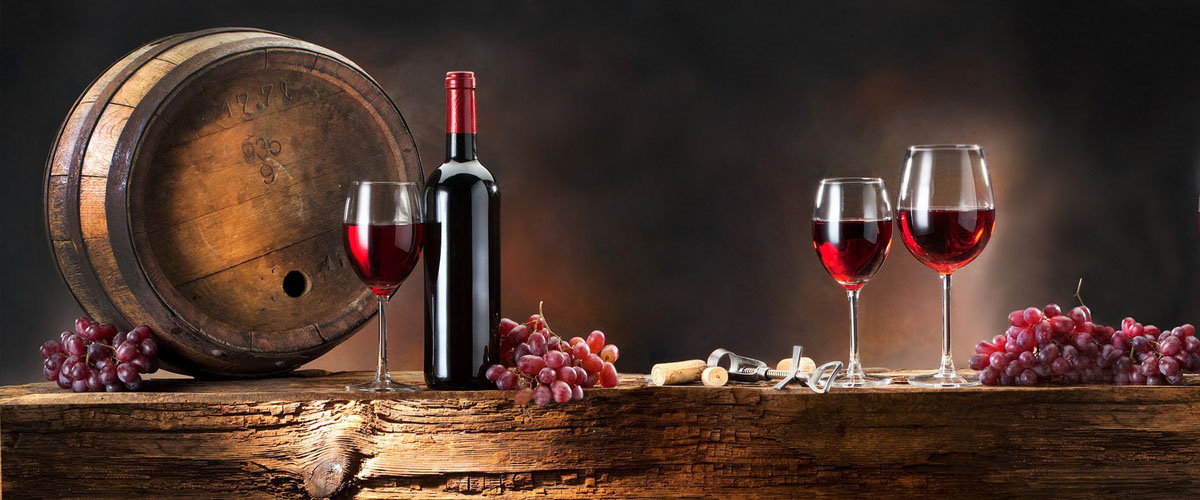
Wine gets after buying quite some rest. Whether they have to be long or short depending on the type of wine, but suffers all the wine of transport. The equilibrium is disturbed and the character does not have to draw.Therefore, should rest a wine at least three weeks before he is drunk.
Obviously not all the wine you buy at drinking. You will need to assume that wines, depending on the species, but coming after a longer or shorter period of aging to full advantage. This is the main reason to observe is to build and decorate your wine cellar.
What is the ideal environment for storing wine?
Wine is a drink that is alive. He will change by spending a few years in the bottle. External factors play a very important role in the proper development of the wine.
A good environment is a closed, dark room, free from vibration, noise and odors, without draft but with a fan, with a humidity of 75% and above all the most cash possible temperature between 7 and 21 ° C.
- The temperature must be kept under control.
An excessively high temperature makes the wine very quick aging and damage the aromas. Too low a temperature can all sorts of things in the wine crystallize, which may perish again flavors.
Temperature fluctuations are very dangerous because they are aging first let progressed rapidly and then slow down again. This ensures that both the substances produced by cold as those which are destroyed by heat will disappear.
It is therefore very important to have a constant, moderate temperature of between 7 and 21 ° C. - The humidity also plays a crucial role in the aging process of the wine.
In most wine bottles is a natural cork. Cork is the product of the cork oak and 'alive' so. Too dry environment does the cork from drying out which wine goes easily from the bottle and air into the bottle. This allows for the complete oxidation and thus destruction of the wine. Invading vinegar bacteria can quickly transform the wine into a disaster.
If it is too moist can rot the cork on the outside, again with the effect that eventually wine from the bottle and air into the bottle. - Also ventilation is important.
Because the cork through its pores trace amounts of air exchange between the basement area and the air inside the bottle, the basement also air into the bottle. Poor basement odors can thus be incorporated into the wine, sometimes with fatal consequences. This is obviously not a problem for wines that will mature for years. - Light doing many reactions occur in nature. Similarly in wine. It is important that as little as possible, light arrives at the bottle. This is also the reason why his classic bottles of dark color. You would do well to put a bulb of no more than 40 watts.
- Finally, I wish to raise an unproven theory. Wine would suffer through long periods of vibration and sound certain reactions. Many stand firm a cellar close to a heavily traveled road or rail should not exist.
How do I organize my wine cellar?
Wine is to be stored flat in order to prevent the cork from drying out and shrinks, through which air can come in.
A wine cellar would first have to have enough space to accommodate at least your current usage. Experience shows that a cellar always becomes too small after some time. Keep this fact.
You should also make sure that reach the bottles are always smooth and easy cataloging.
White and red wine are pretty separate, and the red is up to the top because there is slightly warmer in the basement. You can then lay further apart according to the time they would have to evolve or according to taste. If you are a real amateur and necessary place you can divide your basement into compartments so that red wine may be a few degrees warmer than the white wine and Champagne.
then the classification should be adapted to your buying patterns. If you buy wine by 6 bottles than the compartments will be smaller than if you buy wine by 24 bottles.
There are several design options:
- Stacking existing wine boxes together. However, this takes a lot of space.
- Stackable wine events in concrete or crushed marble. These are easy to stack compartments in different sizes, which you include in Marcy-Vinho available from Wetteren.
- Wooden shelves with diagonal distributions.
Lastly, complete a maximum-minimum thermometer and hygrometer design of the wine cellar. By regularly checking them you can correct any errors. These corrections can be made using a chilled or heated ventilation system.
Xxxxx offers all kinds of accessories for the wine cellar.
Wine storage cabinets are an alternative to a basement?
Wine storage cabinets are indeed perfect alternatives to a wine cellar. The cabinets have a capacity of 50 to 500 bottles. They are equipped with a ventilation system so that temperature, humidity and ventilation are optimal.
There are two systems:
- storage cabinets that have a constant cellar area to stack storage wines.
- wine refrigerator's temperature with compartments of 6 to 18%, which are previously used to serve for quickly wine.
